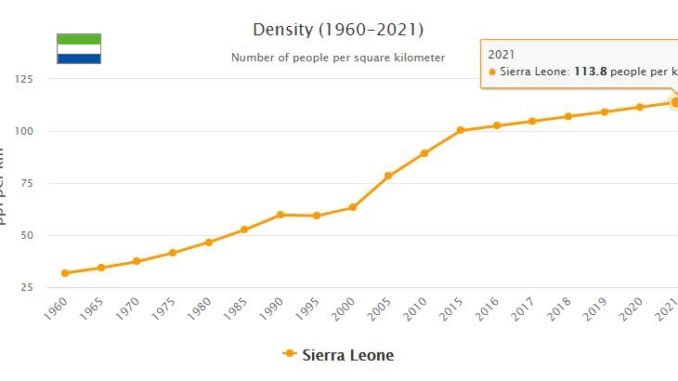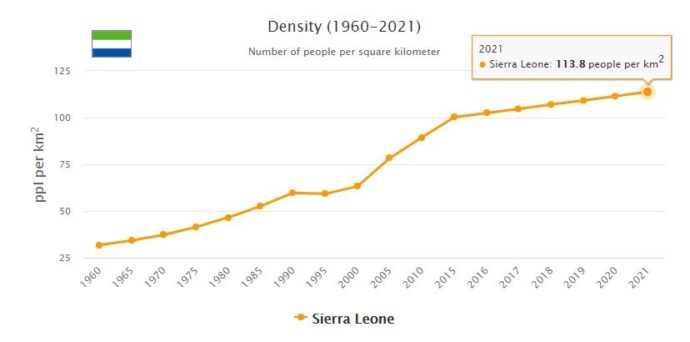
Yearbook 2013
Sierra Leone. According to Countryaah, the UN Human Development Report 2013 on developments in the countries of the world revealed that Sierra Leone is one of the most developed countries in the last three years. The country has especially improved in areas such as health, income and education. But Sierra Leone is still one of the world’s poorest countries and has a low HDI (Human Development Index), the measure on which the United Nations Development Program (UNDP) bases its comparison of wealth in the world’s countries.
In the autumn, the country was granted a $ 96 million loan from the International Monetary Fund (IMF). The money was intended to be used for poverty reduction and to further develop the country’s economy.
In April, Sierra Leone sent 850 soldiers to Somalia to join the African Union peacekeeping force, AMISOM. Two months later, one of Sierra Leone’s military bases in Somalia was attacked by the militant movement al-Shabab. The main task of the AMISOM Peace Force is to stabilize the situation in Somalia by, among other things, facilitating the distribution of humanitarian aid and maintaining security in the areas where the force is mandated to operate.
During the year Swedfund, which is the Swedish state’s venture capital company for investments in poor countries, again received criticism for the biofuel project in which the company invested SEK 90 million from the Swedish aid budget. The money has gone to the Swiss company Addax BioEnergy, which since 2011 grows sugar cane in Sierra Leone for the production of bioethanol for the European energy market.
The criticism against Swedfund dealt, among other things. that the project has not led to more jobs for the residents of the area, who also testified that they have had less access to food since the project was started. Since biofuel began to be produced in Sierra Leone, large areas of land have been leased out to the foreign companies for up to 50 years, which means that the population will lose the right to nearby agricultural land for a very long time to come. In 2012, 49% of Swedfund’s investments in Africa were made.
During the summer, several corruption scandals were discovered within the country’s banking system and the government world. Several people were arrested for participating in the corruption, which aroused great debate in the country’s media. At the end of July, a report was issued by the organization Transparency International which confirmed the image of Sierra Leone as a country where corruption is increasing and poses major problems for the population. According to the report, a great responsibility rests with the government, which instead of counteracting the development itself has institutionalized bribery and other forms of corruption. According to Transparency International, the country is the most corrupt in the world.
- According to AbbreviationFinder.org, Freetown is the capital city of Sierra Leone. See acronyms and abbreviations related to this capital and other major cities within this country.
Economic conditions
The years of armed struggle led by the Revolutionary United Front, which culminated in the military coup of 1997, plunged into chaos a country that had long belonged to the group of the five poorest states in Africa. World Bank estimates they attributed to Sierra Leone a per capita income of 130 dollars in 1999, a figure that attested that practically the entire population lived below the poverty line. With the pacification that took place in 2001, Sierra Leone has committed itself to trying to get out of economic paralysis, starting the liberalization of trade, the development of the private sector and the fight against corruption. Unemployment, however, remains very high (70% in 2005) and the population survives mainly thanks to the help of churches and welfare agencies that provide emergency food and medicines. The recovery of agricultural and manufacturing activity is still struggling to take off and the growth of GDP in the years 2002-09 is mainly due to the reconstruction works, especially in the transport and services sector.
The primary sector, which employs about 60% of the active population and contributes 49% to GDP (2005), is mainly represented by subsistence agriculture, which however fails to guarantee food self-sufficiency. The main agricultural production is that of rice, grown in the reclaimed coastal strip and, with the practice of terracing, N of Marampa; among other food crops we should mention cassava, millet, sorghum, corn, yam, citrus fruits, peanuts, tomatoes. The products aimed at export are coffee, cocoa and palm nuts. Fishing activity prevails in the northern coastal strip and supplies molluscs and crustaceans for export. As for the forest heritage, from the rainforest originating from the south-eastern area of the country, which covers 29% of the national territory, over 5 million m 3 of wood are extracted per year (2007).
